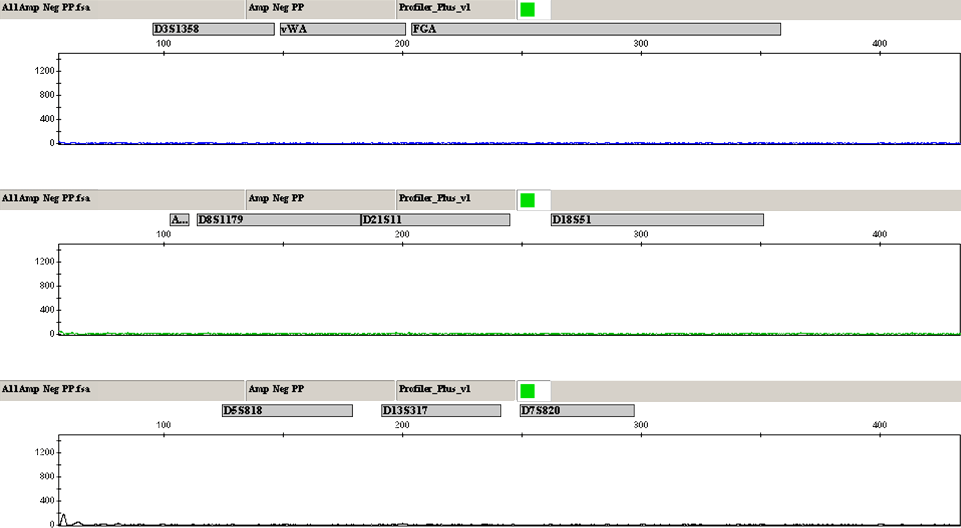Archival Notice
This is an archive page that is no longer being updated. It may contain outdated information and links may no longer function as originally intended.
Home | Glossary | Resources | Help | Contact Us | Course Map
Reagent blanks are routinely processed with samples. Laboratories include reagent blanks in the extraction, quantitation, and amplification processes to aid in monitoring potential contamination of reagents and/or supplies. These blank samples should show no DNA pattern other than that of the internal size standard. Negative controls or reagent blanks showing unexplained extraneous DNA could indicate contamination.
Analysts should closely evaluate blank samples, including assessment of peaks under the established threshold. If there is a discernable pattern of allelic activity that cannot be attributed to a spike, pull-up, or other artifact, the analyst should troubleshoot the problem and follow the procedures established by the laboratory.
Read more about detecting and preventing contamination in course: DNA Amplification.
(You may have to enter your Userid and password.)
Additional Online Courses
- What Every First Responding Officer Should Know About DNA Evidence
- Collecting DNA Evidence at Property Crime Scenes
- DNA – A Prosecutor’s Practice Notebook
- Crime Scene and DNA Basics
- Laboratory Safety Programs
- DNA Amplification
- Population Genetics and Statistics
- Non-STR DNA Markers: SNPs, Y-STRs, LCN and mtDNA
- Firearms Examiner Training
- Forensic DNA Education for Law Enforcement Decisionmakers
- What Every Investigator and Evidence Technician Should Know About DNA Evidence
- Principles of Forensic DNA for Officers of the Court
- Law 101: Legal Guide for the Forensic Expert
- Laboratory Orientation and Testing of Body Fluids and Tissues
- DNA Extraction and Quantitation
- STR Data Analysis and Interpretation
- Communication Skills, Report Writing, and Courtroom Testimony
- Español for Law Enforcement
- Amplified DNA Product Separation for Forensic Analysts


